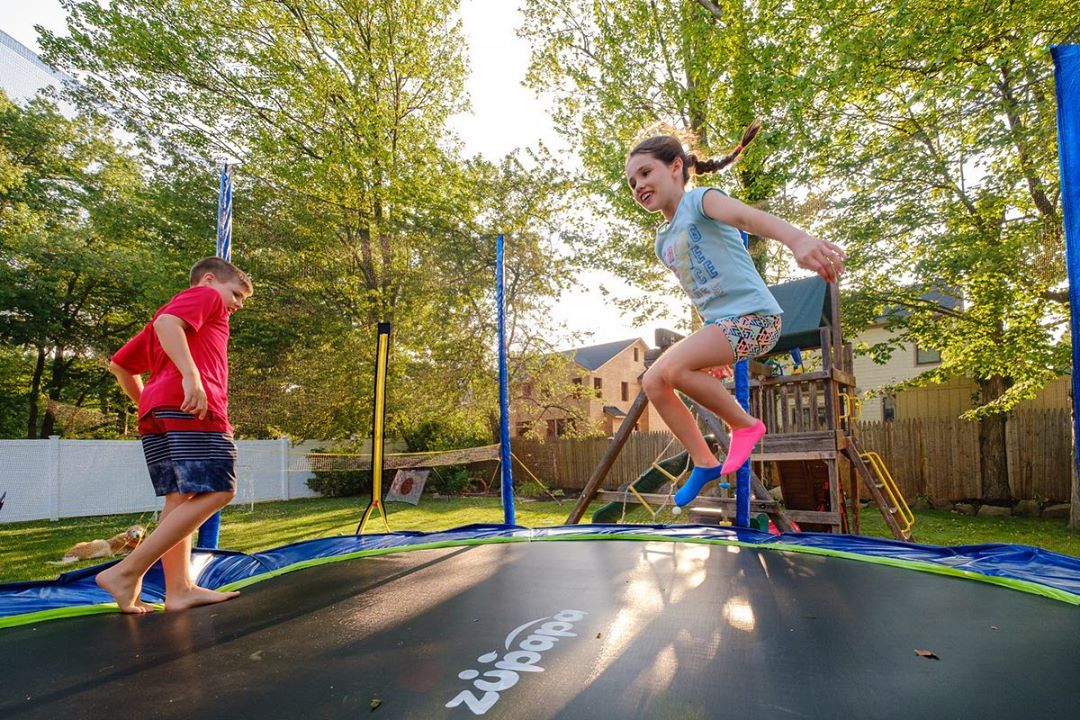The end of March marks a step closer to the week for World Autism Awareness. Zupapa feels so strongly about giving back to the community. In terms of ASD, we'd like to do something practical – make our trampolines at a price enabling most families to enjoy the bounce and improve the public’s awareness of autism or ASD (Autism Spectrum Disorder).
What’s autism?
According to C.D.C (Centers for Disease Control and Prevention), “autism spectrum disorder (ASD) is a developmental disability that can cause significant social, communication and behavioral challenges.” It’s often not how individuals with ASD look that sets them apart from others, but their way of communication, interaction, behavior, and learning.
The symptoms for a kid on the spectrum vary from person to person, so do their abilities of learning, thinking, and problem-solving – they can range from gifted to severely challenged. Some need a lot of help in their daily lives; others need less.
Why we should pay attention to it?
According to estimates from CDC’s Autism and Developmental Disabilities Monitoring (ADDM) Network, “about 1 in 54 children has been identified with autism spectrum disorder (ASD).” What’s worse, currently, it’s generally accepted that no treatment has been shown to cure ASD.
The good news from studies is that interventions for those on the spectrum at their early age can improve development. It’s generally believed that “early intervention services help children from birth to 3 years old (36 months) learn important skills: talk, walk and interact with others, which may reduce symptoms, improve cognitive ability and daily living skills, and maximize the ability to participate in the community”.
What’s trampoline therapy?
Trampoline therapy, or also called rebound therapy, has long been proved to be beneficial to curb autism, both mentally and physically.
It is well known that individuals on the spectrum are often overwhelmed with group situations. It would be difficult for them to take part in team sports, gym classes (or exercise). Trampolines are a good alternative that benefits the jumper but avoids the feeling of being overwhelmed. Almost every part of the body can get exercised because they can lie, walk, somersault, and jump on the mat. They can develop their gross motor skills, core strength, and coordination at the same time. The rhythmic up-and-downs do great good to the sensory development as well as the ability to process and organizes incoming information. A trampoline is also a great way to give relief before stress leads to a complete meltdown.
How can you do trampoline therapy for kids on the spectrum?
A typical 35-minute trampoline therapy would consist of three parts: warming-up (5 minutes), jumping & playing (25 minutes), and a closure (5 minutes). Let’s firstly dive deep into the first question: what preparations should you make?
In terms of safety, supervision is of the most importance. Please note that the supervisor should be on site all the time during the program. Besides the practice of the general safety instructions in our user manual, please also make sure the kid is qualified for such a program: before taking trampoline therapy, test the kid for speed, flexibility, fine motor precision, manual dexterity, fine motor integration, balance, bilateral coordination, and strength.
To do the trampoline therapy, you must need:
- A Zupapa trampoline. We’d recommend an outdoor trampoline because it provides more space and the kid can breathe fresh air outdoors when playing. Of course, you can also try a small trampoline.
- Extra mats or mattresses. Please note it’s a MUST in case the kid rebounds too much and falls.
Let’s see how you can practice trampoline therapy.
The first 5 minutes: Show the trampoline to the kid, let the kid touch it, walk around it, and finally guide the kid to set foot on the trampoline.
The following 25 minutes: It’s the chief part where the actual jumping & playing happens. Instead of leaving the kid jumping alone, we’ve collected some methods to make this part more interesting:
- Make the kid walk around on the trampoline mat with guided assistance.
- Make the kid lie on the mat in a prone position while lifting the chest, neck, and head. It would do a lot of good to form the kid’s sensation.
- Provide the kid with a box of chalks. Drawing on the mat is fascinating and also a good way to strengthen concentration.
- Provide some soft sensory balls so that the kid can jump with a ball on hand or play catch with the supervisor.
- Decorate the upper part of the enclosure net with colorful ribbons. They are a good stimulus and the kid may try to catch them.
The last 5 minutes: In this part, it would be better to communicate with the kid (both verbally or nonverbally), or ask the kid to help rearrange the accessories.
Please note that the trampoline therapy introduced above is for kids who can move and jump on the trampoline. For those who are physically challenged, please:
- Hoist them to the trampoline with the wheelchair.
- Gently rebound them so that they can still feel how the trampoline works on their body.



